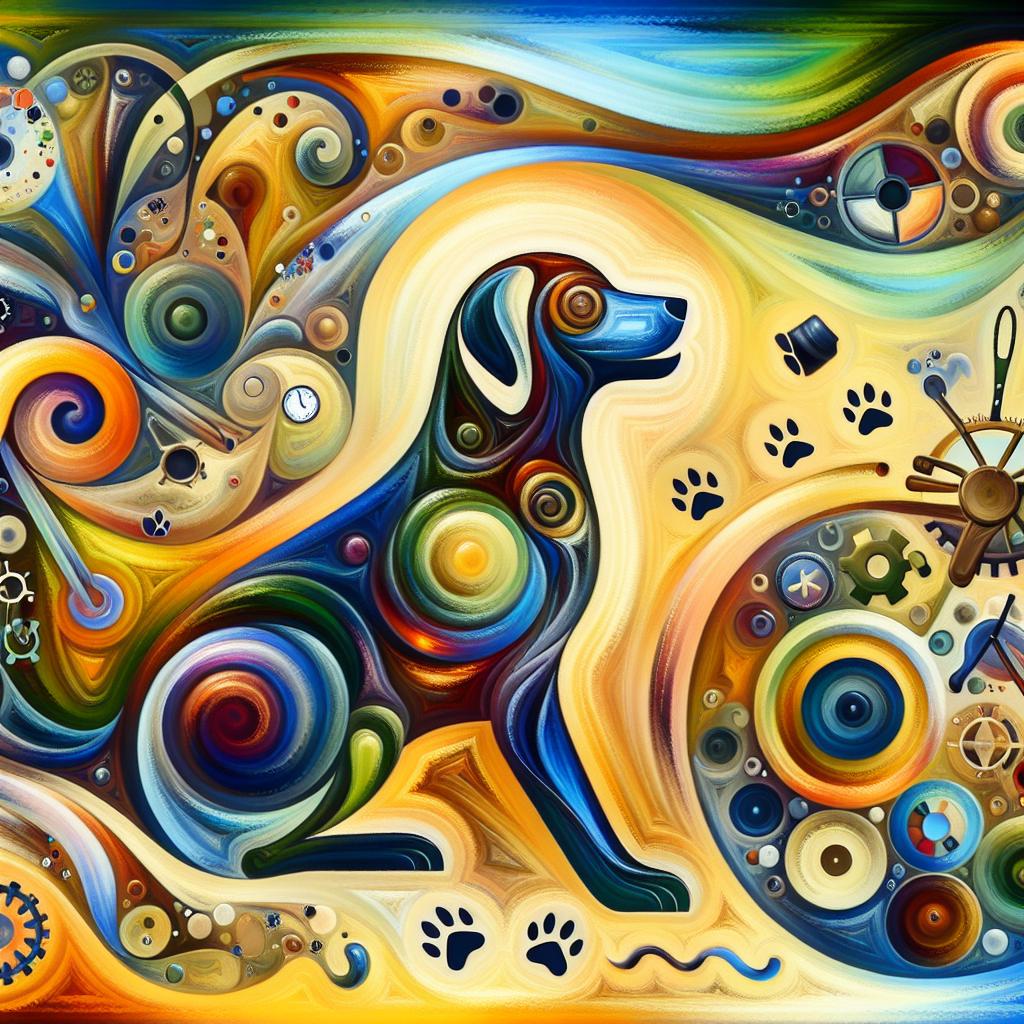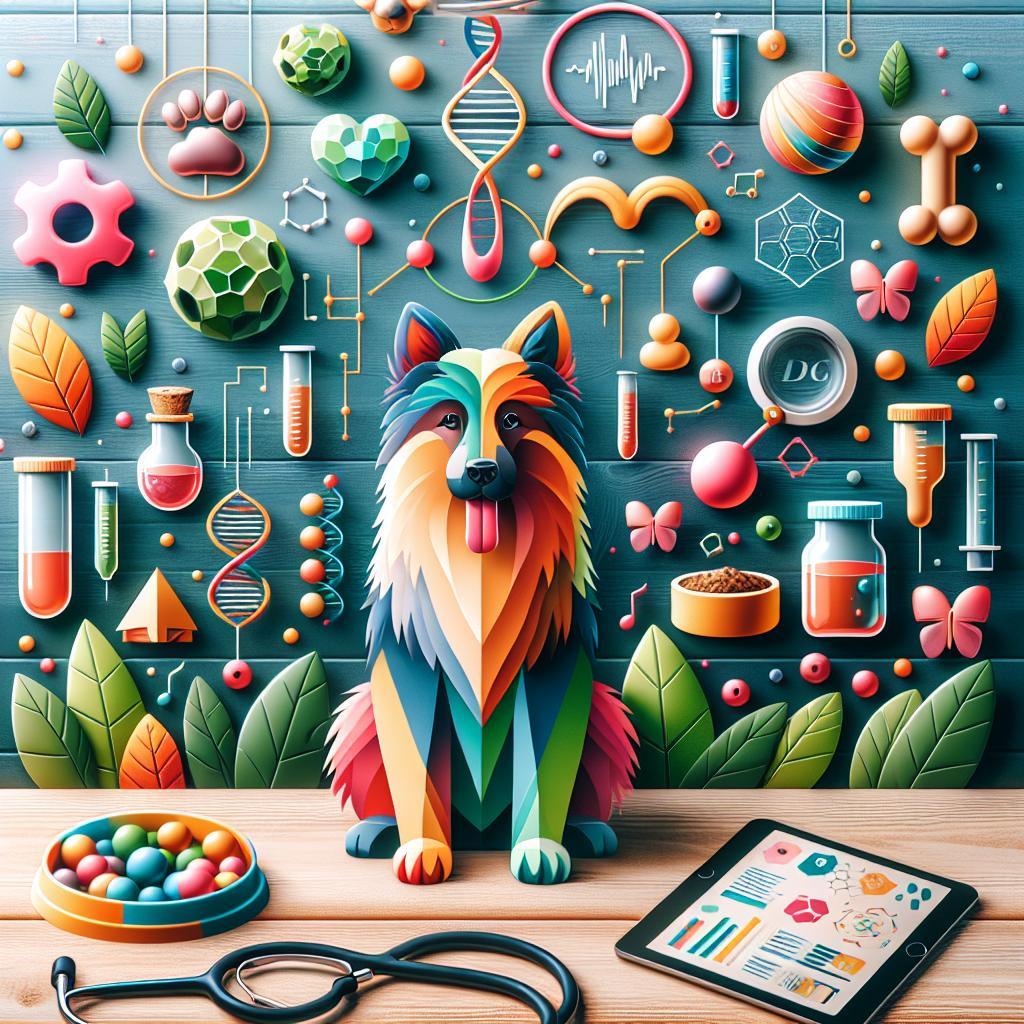In a world where training often evokes images of strict commands and unyielding discipline, a refreshing approach quietly prevails—play. For dog owners and trainers alike, the notion of incorporating play into behavior training may seem unconventional, yet it promises remarkable results. Just as children learn about their surroundings through exploration and joy, dogs, too, thrive in an environment rich with playfulness. This article delves into the transformative power of play in effective dog behavior training, examining how playful interactions not only foster better communication between dogs and their handlers but also promote a positive mindset that encourages learning. By exploring the intersection of fun and training, we will uncover why play is not just a tool, but a fundamental pillar in nurturing well-behaved, happy dogs.
Understanding Canine Playfulness as a Learning Tool
Play is not merely a way for dogs to blow off steam; it serves as a fundamental mechanism through which they learn and develop essential life skills. Engaging in play helps dogs explore their environment, understand social dynamics, and improve coordination. When a dog interacts with toys, other animals, or humans, it experiences a myriad of scenarios that sharpen its problem-solving abilities. These instances often simulate challenges encountered in real life, allowing dogs to practice desired behaviors in a controlled and enjoyable setting. Additionally, play fosters a bond between the dog and its owner, creating a safer atmosphere for learning and reinforcing positive behavior through social rewards.
To harness the power of play effectively in dog training, consider incorporating a variety of structured activities. Here are some examples of play-based training techniques that can contribute to effective behavior modification:
- Fetch Games: Not only reinforces recall but also promotes physical exercise.
- Obstacle Courses: Encourages agility and builds confidence in navigating their environment.
- Hide and Seek: A fun way to enhance focus and enhance the bond between dog and owner.
Utilizing these playful interactions not only maintains a dog’s interest during training but also nurtures an enthusiastic learner. The joyful context of play allows dogs to associate training with fun, minimizing stress and resistance. Consider a customizable approach tailored to each dog’s personality and energy levels, ensuring that play serves as a rewarding and educational experience.
Integrating Play into Training Routines for Maximum Engagement
Incorporating play into training routines not only enhances engagement but also creates a positive atmosphere for learning. Dogs, much like humans, often perform better when they are enjoying themselves. By utilizing toys, games, and interactive activities, trainers can transform mundane drills into stimulating experiences that hold the dog’s attention. Here are some effective strategies to seamlessly integrate play into training:
- Use of Toys: Introduce a variety of toys as rewards during training sessions, emphasizing those that the dog loves the most.
- Game-Based Training: Implement games like fetch or tug-of-war that can reinforce commands while allowing for a playful environment.
- Short Sessions: Keep training sessions brief and dynamic to maintain the dog’s interest and energy levels.
Timing is crucial when integrating play into training. It’s essential to allow play as a reward only after completing tasks successfully. This approach builds a strong association between obedience and fun, motivating the dog to engage more actively in future training. Below is a simple framework for structuring play-based training sessions:
| Activity | Duration | Type of Play |
|---|---|---|
| Command Training | 5 minutes | Focus on Commands |
| Play Session | 3 minutes | Fetch / Tug |
| Cool Down | 2 minutes | Gentle Petting |
This balance of training and play not only makes sessions enjoyable but also paves the way for quicker learning and better behavior, ensuring that your dog looks forward to each interaction.

Choosing the Right Play Activities to Enhance Behavior Skills
When it comes to enhancing your dog’s behavior skills through play, it’s crucial to select activities that align with your dog’s personality, age, and energy level. Different dogs respond uniquely to various forms of play, so understanding their individual preferences is vital. Consider incorporating activities such as:
- Interactive Toys: Stimulate problem-solving skills and keep them mentally engaged.
- Fetch: Great for high-energy dogs, promoting physical exercise and reinforcing retrieval behavior.
- Obstacle Courses: Encourages agility and builds confidence while improving obedience.
- Hide and Seek: Enhances your dog’s scent-tracking abilities and strengthens the bond between you.
- Agility Training: Combines play with training, helping with focus and coordination.
Implementing the right mix of play activities can lead to significant improvements in your dog’s behavior. Aiming for a balanced schedule that includes both physical and mental challenges will not only develop their skills but also foster a sense of accomplishment. Below is a simple guide to help you choose appropriate activities based on your dog’s characteristics:
| Dog Type | Recommended Activities |
|---|---|
| Puppies | Interactive toys, gentle fetch and short training sessions. |
| High-Energy Breeds | Agility training, running games, and extended fetch sessions. |
| Older Dogs | Calm fetch, puzzle toys, and short walks combined with basic commands. |
| Shy Dogs | Gentle hide and seek, one-on-one play, and low-stress environments. |

Building Stronger Bonds Through Play and Positive Reinforcement
Engaging with your dog through fun activities not only elevates their mood but also significantly benefits their behavior training. Incorporating playtime into training sessions creates a positive atmosphere where dogs feel relaxed and eager to participate. Here are some ways to strengthen your bond through play-based techniques:
- Interactive Games: Use toys that require your dog to think and engage physically. Options like tug-of-war or fetch promote cooperation and reinforce positive behavior.
- Reward-Based Training: Combine play with training by rewarding good behavior with playtime. This method establishes a direct connection between obedience and enjoyment.
- Social Playdates: Arrange playdates with other dogs to socialize your pet, helping them learn proper behaviors through peer interaction and supervised play.
Positive reinforcement is essential in shaping desired behaviors. When dogs associate obedience with play and rewards, they are more likely to repeat those behaviors. Consider using a simple table to outline the impact of various types of play on training outcomes:
| Type of Play | Impact on Training |
|---|---|
| Fetch | Enhances recall and self-control |
| Tug-of-War | Builds confidence and impulse control |
| Hide and Seek | Improves focus and problem-solving skills |
Q&A
Q&A: The Role of Play in Effective Dog Behavior Training
Q1: Why is play considered an essential component of dog behavior training?
Play activates the dog’s natural instincts and encourages engagement, making the learning process enjoyable for both the dog and the trainer. By incorporating play into training, dogs are more likely to stay motivated and attentive, leading to more effective learning outcomes.
Q2: How does play help dogs learn?
Play stimulates curiosity and rewards exploration, allowing dogs to develop problem-solving skills in a low-pressure environment. Through games and playful activities, dogs associate training with fun, which enhances memory retention and reinforces desired behaviors.
Q3: What types of play are beneficial during training sessions?
Interactive play, such as fetch, tug-of-war, and hide-and-seek, are particularly beneficial. These activities promote bonding and create a natural platform for communication, where both the trainer and the dog can learn to understand each other’s cues and responses.
Q4: Can play be used to correct bad behaviors?
Absolutely! However, the approach is important. Introducing play during moments of misbehavior can redirect the dog’s attention and channel their energy into a more positive outlet. It’s crucial to reward good behavior during playtime to reinforce positive habits.
Q5: How do dogs’ ages influence their play preferences in training?
Younger dogs tend to have higher energy levels and may enjoy more physically demanding games, while older dogs might prefer gentler activities that stimulate their minds without overexertion. Tailoring the type of play to the dog’s age and physical condition can significantly enhance training effectiveness.
Q6: Is there a balance between play and traditional training methods?
Yes, balance is key! Incorporating structured commands alongside play ensures that dogs learn the necessary skills while still enjoying the process. A mix of discipline and play creates a comprehensive training experience, fostering a well-rounded behavior.
Q7: How can trainers ensure their play methods are effective?
Trainers should observe and adapt to each individual dog’s responses to play. By paying attention to their enthusiasm and engagement, trainers can adjust the intensity and type of play, ensuring that it remains an effective tool for reinforcing training goals.
Q8: Are there risks associated with play in training?
While play is generally beneficial, it can lead to overstimulation or frustration if not managed properly. It’s important to take breaks, monitor the dog’s body language, and ensure that play remains a positive experience rather than becoming a source of stress.
Q9: Can play techniques vary among different breeds?
Indeed! Different breeds may have varying play styles and energy levels. Understanding each breed’s characteristics can help trainers choose the most suitable play activities, ensuring that all dogs stay engaged and eager to learn.
Q10: What is the ultimate takeaway regarding play in dog training?
Integrating play into dog behavior training is not just a way to make learning fun; it is a powerful tool that fosters collaboration, builds trust, and enhances the bond between dogs and their trainers. By valuing play as an essential training method, we nurture happier and more well-adjusted canine companions.
Insights and Conclusions
the role of play in effective dog behavior training cannot be overstated. As we’ve explored, play is not merely a recreational pastime for our furry companions; it is a vital component that enriches the training experience. By integrating playful interactions into training sessions, we tap into the natural instincts and motivations of our dogs, fostering a stronger bond while promoting learning and compliance.
As you embark on your dog training journey, remember that play is a powerful tool in your arsenal. It encourages exploration, enhances understanding, and builds trust between you and your canine friend. So, the next time you pick up a toy or engage in a game of fetch, know that you are not just having fun; you are shaping behavior, reinforcing lessons, and creating lasting memories. Embrace the joy of play, and let it guide you towards a more harmonious relationship with your dog. After all, at the heart of effective training lies the simple truth: when learning feels like play, success follows seamlessly.

